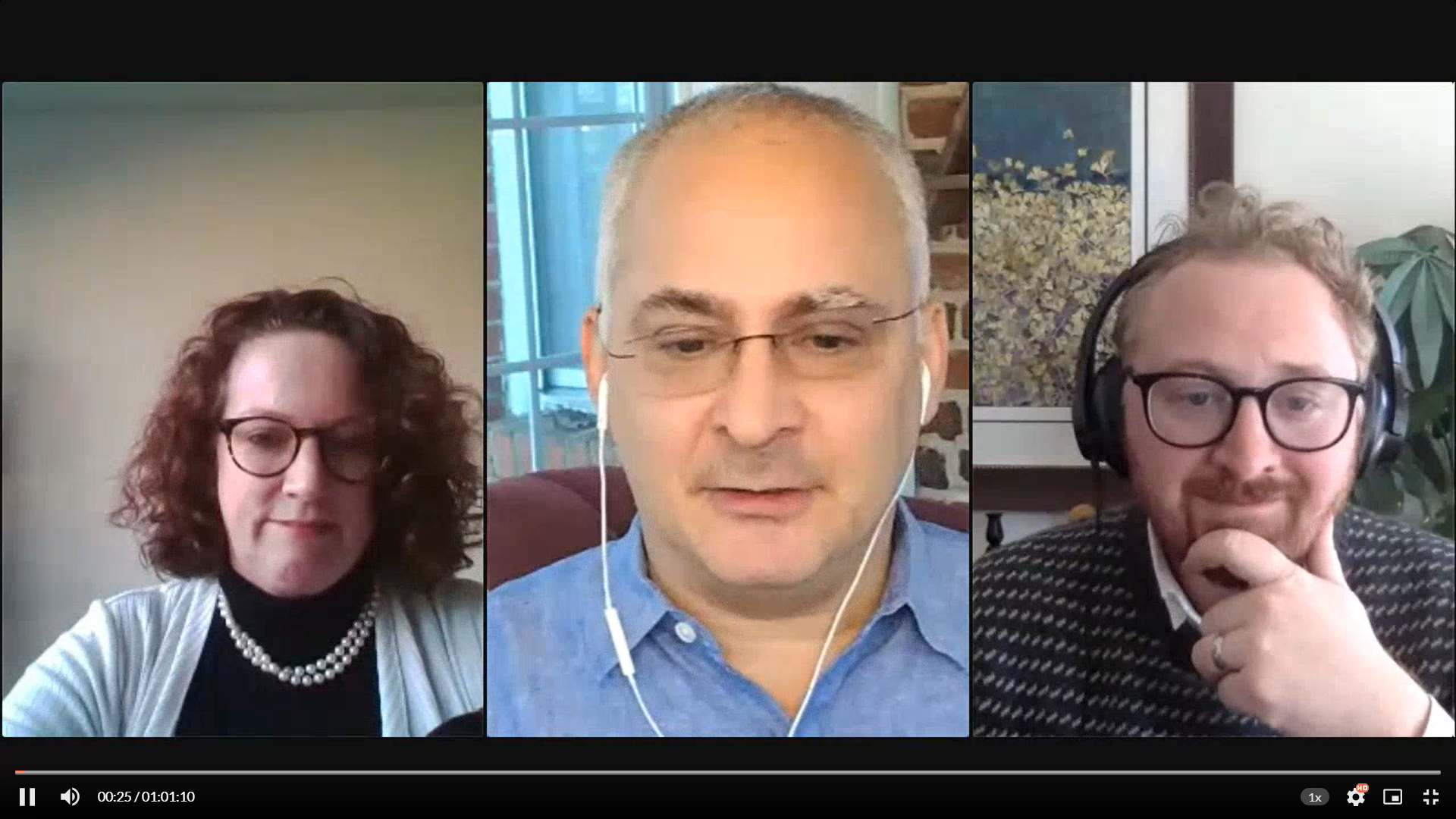Will Trump Make Iran His Partner or His Adversary?
Editor’s Note: Of all the many uncertainties about Trump's foreign policy, the question of Iran looms among the largest. The Obama administration moved U.S.-Iran relations from abysmal to bad, and both Republicans and Democrats heavily criticized the Iran nuclear deal, the most important element of this limited rapprochement. Yet Iran is an important player in the region, and the Trump administration must carefully consider their first step if they seek to confront Tehran or continue limited cooperation.
Published by The Lawfare Institute
in Cooperation With

Editor’s Note: Of all the many uncertainties about Trump's foreign policy, the question of Iran looms among the largest. The Obama administration moved U.S.-Iran relations from abysmal to bad, and both Republicans and Democrats heavily criticized the Iran nuclear deal, the most important element of this limited rapprochement. Yet Iran is an important player in the region, and the Trump administration must carefully consider their first step if they seek to confront Tehran or continue limited cooperation. Ariane Tabatabai of Georgetown and Dina Esfandiary of King's College offer us a roadmap, pointing out areas of potential cooperation in the U.S.-Iran relationship, as well as likely points of continued conflict.
***
President Donald Trump’s anticipated foreign policy continues to generate controversy, but as with so much of his presidency, his future course remains unclear. Trump’s stated Iran policy indicates a more hawkish stance on the Islamic Republic: on the campaign trail he vowed to tear up the Joint Comprehensive Plan of Action, and he has since appointed a number of cabinet members that support regime change in Iran. But Trump and his choice for secretary of state, Rex Tillerson’s focus on cutting deals and willingness to depart from some of the practices of the past could result in a more pragmatic approach to Tehran. If so, Trump will encounter a minefield of intertwined and diverging interests. We offer a roadmap to help him steer through obstacles in the new U.S.-Iran relationship.
America and Iran have two key areas of shared interests and possible agreement: Afghanistan and Iraq.
America and Iran have two key areas of shared interests and possible agreement: Afghanistan and Iraq. Over the course of more than a decade, Washington has committed billions of dollars and thousands of lives to both countries. Both remain vital U.S. interests requiring some level of American presence. Iran has considerable influence in both.
Challenges in Afghanistan are many: the central authority remains fragile, resulting in the strong presence of disparate groups throughout the country. Poppy cultivation remains a concern, and human rights violations occur frequently. To make matters worse, Saudi Arabia, a key Iranian rival, continues to fund opposing groups and religious organizations in the country. Pakistan also has a complicated presence in Afghanistan.
In Afghanistan, Tehran has often played a stabilizing role. Ultimately, like the United States, Iran wants to see some level of stability and security. It is in Iran’s interest to limit the refugee influx into its own territory, avoid the increase in opioid trafficking that plagues its own population, and stop an increase in the presence and influence of the Taliban and terrorist groups like al-Qaeda and the Islamic State.
Iran’s presence in and knowledge of Afghanistan, combined with its influence in Kabul, and most importantly, desire to foster stability, is a resource for the United States and its NATO partners. After all, Iran shares a porous border with Afghanistan, as well as ethnic, religious, linguistic, cultural, political, and economic ties. Tehran was a key partner for the United States in Afghanistan after the 2001 invasion, helping shape the Bonn Agreement, which laid out the foundations for the new Afghan government. The Trump administration should engage Tehran on a number of issues in Afghanistan, including capacity and state-building, economic development, and opioid trafficking. Afghanistan is also key in counterterrorism efforts: the two countries can cooperate to mitigate the threat of al-Qaeda and limit the expansion of the Islamic State in Afghanistan.
In Iraq, too, Washington and Tehran have overlapping interests. Unlike what some of Trump’s potential cabinet members have suggested, Iran is a key stakeholder in the fight against the Islamic State. In fact, like the incoming Trump administration, Tehran sees combatting the Islamic State as a foreign and security policy priority, to which it has committed substantial resources. As in Afghanistan, Iran wants a relatively stable and secure Iraq, one with a functioning central authority governing within the same borders and that continues to house Sunnis, Shias, Kurds, and other minorities. Iran shares 910 miles of porous border with Iraq, as well as ethnic, religious, and political ties and significant economic interests. As a result, instability in Iraq directly affects Iran. Washington must work with Iran in the fight against the Islamic State, to commit less blood and treasure to the region and more effectively counter the group. After all, Iran has a solid counter-Islamic State track record; it has managed to deter or identify and neutralize attacks against its own territory, population, and interests. Moreover, like the United States, Iran has a stake in post-Islamic State Iraq. Both countries want to strengthen Baghdad and ensure the coexistence of all groups.
But Washington views Iran as a problematic player in Iraq, fueling sectarianism and helping various groups target U.S. troops. As a result, the United States wants to minimize Iranian presence in the country. But while America can contain Iran’s presence in Iraq, it can’t get rid of it entirely. And given its influence over various groups in Iraq, Iran could complement U.S. efforts there. Washington must encourage Iran to help pressure the Iraqi government to be more inclusive, working with Sunnis to recapture, maintain, and rebuild Islamic State-controlled territories. But Washington must remain vigilant: most regional countries and Iraqi groups view Tehran as a sectarian player. The United States must address some of Tehran’s nefarious rhetoric and activities in Iraq. This will be easier if Washington and Tehran maintain a dialogue and work together to tackle the ISIS threat in Iraq. In particular, the United States can continue to leverage its contribution to the fight against the Islamic State to pressure Iran to moderate the behavior of Shia militias to the extent that Tehran can.
But while Afghanistan and Iraq present possible areas for cooperation, there are several areas where the United States and Iran have divergent, even conflicting interests.
In Syria, Tehran remains committed to supporting President Bashar al-Assad’s regime, while under President Obama, Washington trained, armed, and supported the moderate rebels that fight him. Disagreements are not limited to what a legitimate government would look like, they also include the transition and the conflicting goals of fighting the Islamic State and ending the civil war. President Trump wants to end support to the Syrian rebels and focus on combatting the Islamic State. But disengaging from the moderate rebels risks disenfranchising the remaining few committed to fighting the Islamic State and a delegitimised Assad, as well as boosting extremism and emboldening the very country Trump and his cabinet want to contain: Iran. It’ll also further strain the U.S. relationship with regional allies. Iran, for its part, has a dilemma it has yet to resolve: it wants to end the civil war while maintaining a friendly authority in Damascus and pushing back the Islamic State. Clearly, the Trump administration should not align America’s Syria policy with Russia and a confused Iran. Rather, Trump must engage with both, as well as Gulf Arab states and Turkey, to bring together the disparate and divided groups in Syria to find a solution to the civil war. Washington must also use this dialogue to find common ground with Tehran on how to make the fight against the Islamic State in Syria more effective. After all, Tehran has a firm desire to fight the Islamic State that Moscow doesn’t have. Finally, this dialogue will be necessary to overcome the obstacles in the way of humanitarian efforts in Syria.
In Yemen, too, Washington and Tehran’s goals are different. Today, the United States stands with its regional partners in their efforts to push the Houthi rebels back and reinstate President Abdrabbuh Mansur Hadi, while containing Iranian influence in Gulf Arabs’ backyard. Iran, for its part, certainly provides the Houthis with weapons, financial support, and training (both directly and indirectly via Hezbollah), but its scope is more limited than what the Gulf Arabs perceive. The conflict in Yemen doesn’t provide an opportunity for U.S.-Iran collaboration, but dialogue remains important. Yemen is a high priority for Riyadh, but a low priority for Tehran. This makes it the lowest hanging fruit for meaningful regional security dialogue. While the Gulf Arabs oppose the idea of discussing “Arab affairs” with Iran, sooner or later they must face the reality that the prolongation of their campaign in Yemen is creating tensions and divisions among them, and draining resources at a time of economic difficulty. The campaign also tarnishes the coalition’s credibility and image. And while Tehran maintains a back seat in Yemen, it sees the growing regional instability as a threat, and a continued drain on its resources, particularly given the relative importance of the conflicts in Iraq and Syria compared to Yemen. As a result, the incoming Trump administration must use its influence with its Gulf Arab allies to encourage them to talk to Tehran in order to resolve the crisis in Yemen.
The [Iran nuclear] deal is a multilateral agreement with buy-in from key international players, and ensuring its effective implementation is a matter of U.S. national security interest and credibility.
Ensuring the successful implementation of the 2015 nuclear deal between Iran and the world powers is a prerequisite to dialogue in other areas. If the deal is scrapped, Iran’s reactions will range from simply being less amenable to dialogue with the West and the Gulf Arabs, especially on regional conflicts, to deliberately worsening existing conflicts. The deal blocks Iran’s potential pathways to the bomb and subjects its nuclear program to intrusive verification measures. To be sure, the agreement has flaws, but even skeptics, including U.S. allies in the Gulf and analysts in Washington, have called for Trump to adhere to its terms. These include one of the new administration’s greatest Iran hawks, the incoming Secretary of Defense Gen. James Mattis, who has supported the agreement. The deal is a multilateral agreement with buy-in from key international players, and ensuring its effective implementation is a matter of U.S. national security interest and credibility.
Trump’s administration must also shelter the deal from likely crises, like the November 2016 accumulation of heavy water by Iran beyond the limits allowed by the agreement. Such minor crises are likely to arise again. They will be better managed through dialogue rather than escalation. The quick release of the U.S. sailors following direct communication between the two capitals this year was an example of what engagement can achieve. Effective implementation of the agreement also includes effective sanctions relief. Today, while business interest in Iran is high, money exchanging hands is still relatively limited. While much of that is a result of Iran’s opaque economy and lack of regulations, the slow pace of sanctions relief and the lack of clarity regarding U.S. regulations and politics remains a problem. The incoming administration must provide much-needed, low-cost political assurance that it’ll continue to adhere to the agreement.
Trump will enter the White House at a time of continued instability in the Middle East, while the U.S. public grows more tired of its resource-draining wars in Afghanistan and Iraq. As Trump alluded to during the campaign, Washington must limit the blood and treasure it commits to the region, and it can only do so by working with others where possible. Iran affords the United States several areas for cooperation. Far from controlling four Arab capitals—as Iranian hardliners claim and Gulf Arabs repeat—Iran has varying degrees of influence in its neighborhood. While it is in Tehran’s interest to see some level of instability in the region, it also wants to avoid failing states and power vacuums. After all, Iran loses all influence if those countries collapse entirely. As a result, both Washington and Tehran have an interest in working together to strengthen governments in the region and combat terrorist groups.





